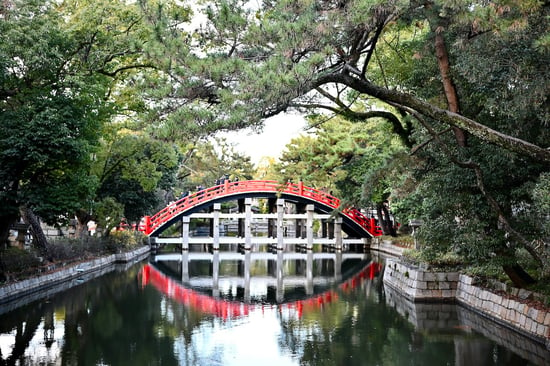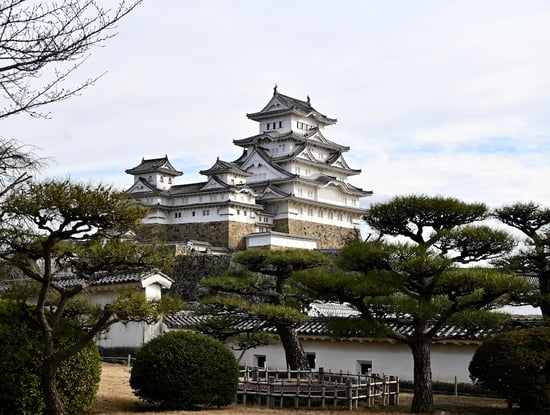Nara Travel Guide
奈良市 • なら
So you're planning a day trip to Nara? Dive into our comprehensive Nara travel guide covering everything you need to know about the city and the must-do experiences awaiting you.
Nara Travel Guide: Timeless Treasures & Tranquility in a Day Trip
Nara, a city steeped in cultural richness and historical significance, is located in the Kansai region of Japan, just south of Kyoto and Osaka. Renowned for its temples, sacred deer, and ancient heritage, Nara holds the distinction of being Japan's first permanent capital. A day trip to Nara offers a captivating journey back in time. The centerpiece of the city is Nara Park, where hundreds of freely roaming deer captivate visitors. The Todai-ji Temple, a UNESCO World Heritage Site, houses a colossal bronze Buddha and stands as an architectural marvel. Exploring the charming streets of Naramachi, the traditional merchant district, provides a glimpse into the city's historical character. Nara is widely recognized as the birthplace of sake (Japanese rice wine), making its breweries essential stops for sake enthusiasts. As an ideal day trip destination, Nara offers a tranquil retreat from the bustling cities nearby, home to a harmonious blend of history, spirituality, and captivating landscapes.
Nara Travel Guide: Quick Tips
Nara's Top Sights
Embark on an enchanting journey through Nara's top sites, ranging from temples and shrines to parks and gardens. With its diverse array of attractions, Nara promises an unforgettable experience for every traveler. While experiencing all these attractions in a single day is not be feasible, we suggest hand-picking a few highlights for your day trip to Nara.
We've highlighted all the attractions we visited and adored with the universal symbol of love, ♡.
- Nara Park: ♡ Nara Park is renowned for its picturesque landscape and hundreds of iconic free-roaming deer, considered sacred messengers in Shinto belief. Visitors can indeed feed the deer, as vendors within the park sell "shika senbei" (deer crackers) for this purpose. Be warned that the deer can be aggressive and may even bite you, especially once they know you have food for them. Besides the deer, the park is home to significant landmarks like Todai-ji Temple and Kasuga Taisha Shrine, creating a harmonious blend of cultural heritage and natural beauty in the heart of Nara.
- Kofuku-ji Temple: Kofuku-ji Temple stands as a testament to the city's rich history, dating back to the 7th century. Renowned for its five-story pagoda, the temple complex once served as a powerful political center. The pagoda is a symbol of both Nara and Kofuku-ji, offering panoramic views of the city. While the original complex was larger, various structures and artifacts have been preserved, including the iconic Central Golden Hall. Kofuku-ji is a UNESCO World Heritage Site, inviting visitors to explore its historical significance and architectural beauty amidst the tranquil surroundings of Nara. The iconic five-story pagoda is currently undergoing significant restoration work and is currently covered by scaffolding. The work is not scheduled to be completed until 2031.
- Todai-ji Temple: ♡ Todai-ji Temple, a UNESCO World Heritage Site, is a monumental Buddhist complex known for housing the Daibutsu, a colossal bronze statue of Buddha. Founded in the 8th century, the temple complex boasts impressive wooden structures, including the Great Buddha Hall (Daibutsuden), considered one of the world's largest wooden buildings. The Daibutsu, measuring over 15 meters in height, exudes a profound sense of serenity and awe. Todai-ji has played a pivotal role in Japan's religious and political history, reflecting the enduring cultural and spiritual legacy of Nara. The surrounding Nara Park adds to the temple's allure.
- Kasuga Taisha Shrine: Kasuga Taisha Shrine, nestled in the verdant forests of Nara, is a Shinto shrine celebrated for its mystical ambiance and lantern-lined pathways. Established in the 8th century, the shrine is renowned for its numerous vermilion lanterns that adorn the paths and structures. These lanterns, donated by worshipers, create a mesmerizing spectacle during the Setsubun Mantoro festival when they are lit, illuminating the entire shrine. The architectural style, characterized by vibrant colors and intricate details, adds to the spiritual charm of Kasuga Taisha. Surrounded by ancient cedar trees, this UNESCO World Heritage Site offers a tranquil retreat, inviting visitors to experience the spiritual essence and cultural richness of Nara.
- Explore Naramachi: Naramachi, situated in the heart of Nara, is a historic neighborhood that preserves the traditional charm of Edo-period Japan. Characterized by well-preserved machiya (traditional wooden townhouses), narrow winding streets, and a nostalgic atmosphere, Naramachi offers a delightful glimpse into the city's past. Visitors can explore Machiya Street, lined with quaint shops, cafes, and galleries housed in restored traditional buildings. The Naramachi Koshi-no-Ie merchant house, now a museum, provides insights into the daily life of merchants during the Edo period. Additionally, the district is home to Gango-ji Temple, one of the city's oldest Buddhist temples.
- Isuien Garden: Isuien Garden is a meticulously designed Japanese garden, featuring ponds, bridges, and teahouses that create a serene and harmonious atmosphere, offering visitors a tranquil retreat in the heart of the city.
- Yoshikien Garden: Yoshikien Garden in Nara features three distinct styles – Pond, Moss, and Tea Ceremony Gardens – offering visitors a serene escape with carefully landscaped elements and traditional Japanese aesthetics.
- Nara National Museum: The Nara National Museum, located in Nara Park, is a prominent cultural institution dedicated to preserving and showcasing Japan's cultural and artistic heritage. Established in 1889, the museum focuses on the rich history of Nara and its significance as the first permanent capital of Japan. The museum's extensive collection includes a diverse range of artifacts, traditional crafts, and religious art, providing visitors with a comprehensive understanding of Nara's cultural evolution.
- Yakushi-ji Temple: Yakushi-ji Temple is a distinguished Buddhist temple with roots dating back to the 7th century. Dedicated to Yakushi Nyorai, the Buddha of Healing, the temple was originally commissioned by Emperor Tenmu for the recovery of Empress Jito. While the original structures were lost over the centuries, the current complex still radiates historical and spiritual significance. Yakushi-ji consists of the East and West Pagodas, the main hall (Hondo), and the Kodo lecture hall. The East Pagoda, a designated National Treasure, is a remarkable example of early Japanese Buddhist architecture. Surrounded by lush greenery, Yakushi-ji offers a tranquil setting for visitors to appreciate both the religious and architectural heritage of ancient Japan. Yakushi-ji is a UNESCO World Heritage Site.
- Toshodai-ji Temple: Toshodai-ji Temple is one of Japan's early Buddhist monastic complexes. Founded in 759 by the Chinese monk Ganjin Wajo (Jianzhen). The temple features several structures, with the Golden Hall (Kondo) being a prominent highlight. The Golden Hall houses a statue of Ganjin. Toshodai-ji also includes the Kodo (lecture hall), the Koro (bell tower), and the living quarters. The serene gardens surrounding the temple enhance the contemplative atmosphere. Ganjin's contributions to Japanese Buddhism and the temple's historical significance contribute to Toshodai-ji's status as a UNESCO World Heritage Site.
UNESCO: Historic Monuments of Ancient Nara >
Top Things to Do in Nara >
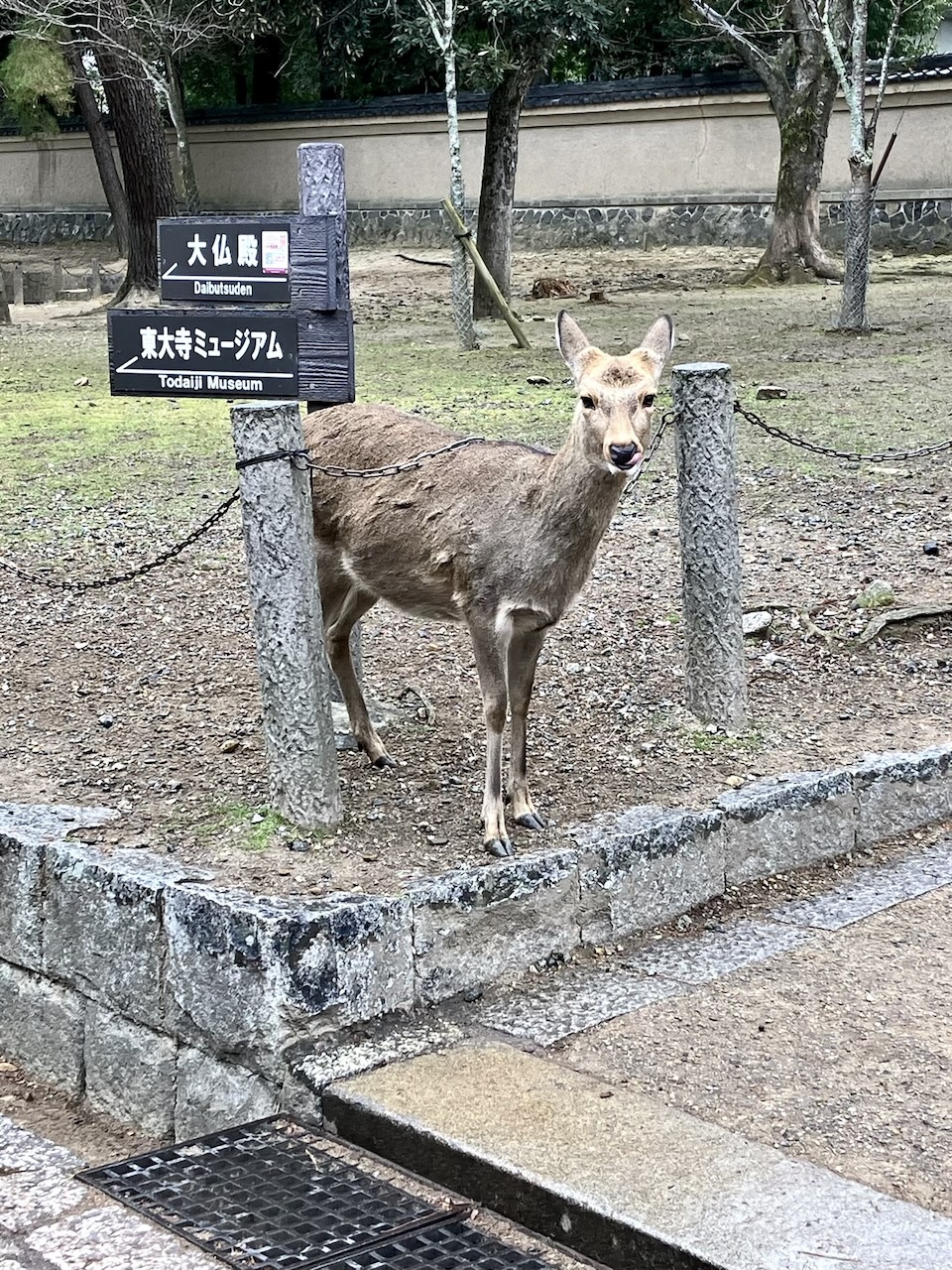
A Taste of Nara
Nara offers a diverse culinary experience, beckoning food enthusiasts to explore its unique flavors. From traditional kakinoha-zushi and kudzu mochi to innovative street food and renowned dining spots, the city presents a broad spectrum of tastes.
Specialty Foods
Nara is known for several delicious local specialties:- Kakinoha-Zushi: Sushi wrapped in persimmon leaves for a distinctive flavor.
- Kaki No Ha Bungo: Persimmon leaf-wrapped mochi, a popular treat.
- Kudzu Mochi: Jelly-like confection made from arrowroot starch.
- Narazuke: Pickled vegetables with a unique flavor.
- Miwa Somen: Thin wheat noodles served with flavorful dipping sauce.
Famous Mochi Pounding
If you've scrolled through social media, chances are you've come across captivating videos showcasing mochi pounding in Nara. At the heart of Nara City lies the renowned mochi shop, Nakatanidou. Specializing in yomogi mochi, Nakatanidou's lively pounding ritual isn't just for display; it yields soft, chewy mochi. Each meticulously crafted mochi is hand-dusted with kinako (roasted soybean flour) and filled generously with red bean paste before being served.
Signs posted on the shop's window will let you know when to expect the next mochi pounding demonstration, but they are typically conducted a few times a day. The mochi itself was the best we had on our travels to Japan!
Popular Restaurants
Nara is full of restaurants serving a variety of cuisines. Since we were only in Nara for a day, we elected to try kakinoha-zushi (persimmon leaf sushi) in a restaurant off the beaten path, called Hiraso. The food was fantastic! We sat in the traditional zashiki-style on the floor which added to the atmosphere of our lunch.
Looking for other restaurant suggestions in Nara? Check out the links below.
Michelin Guide Nara - Restaurants >
15 Restaurants You Should Visit in Nara >
Places to Eat in Nara >
Breweries
Nara is considered the birthplace of sake and Nara's sake breweries contribute to the city's rich culture. These breweries produce a variety of sake, reflecting traditional brewing techniques and regional flavors. Exploring Nara's sake scene offers a delightful journey into the world of this iconic Japanese rice wine, with opportunities to savor unique brews and appreciate the artistry behind each bottle.
Harushika Brewery is a popular destination for sake enthusiasts in Nara. We visited for a sake tasting (priced very reasonably at ¥500 per person) and left with five bottles of their sake to take home. We especially enjoyed their sparkling sake and the staff were really wonderful too. The brewery is a 10-minute walk from Kofuku-ji.
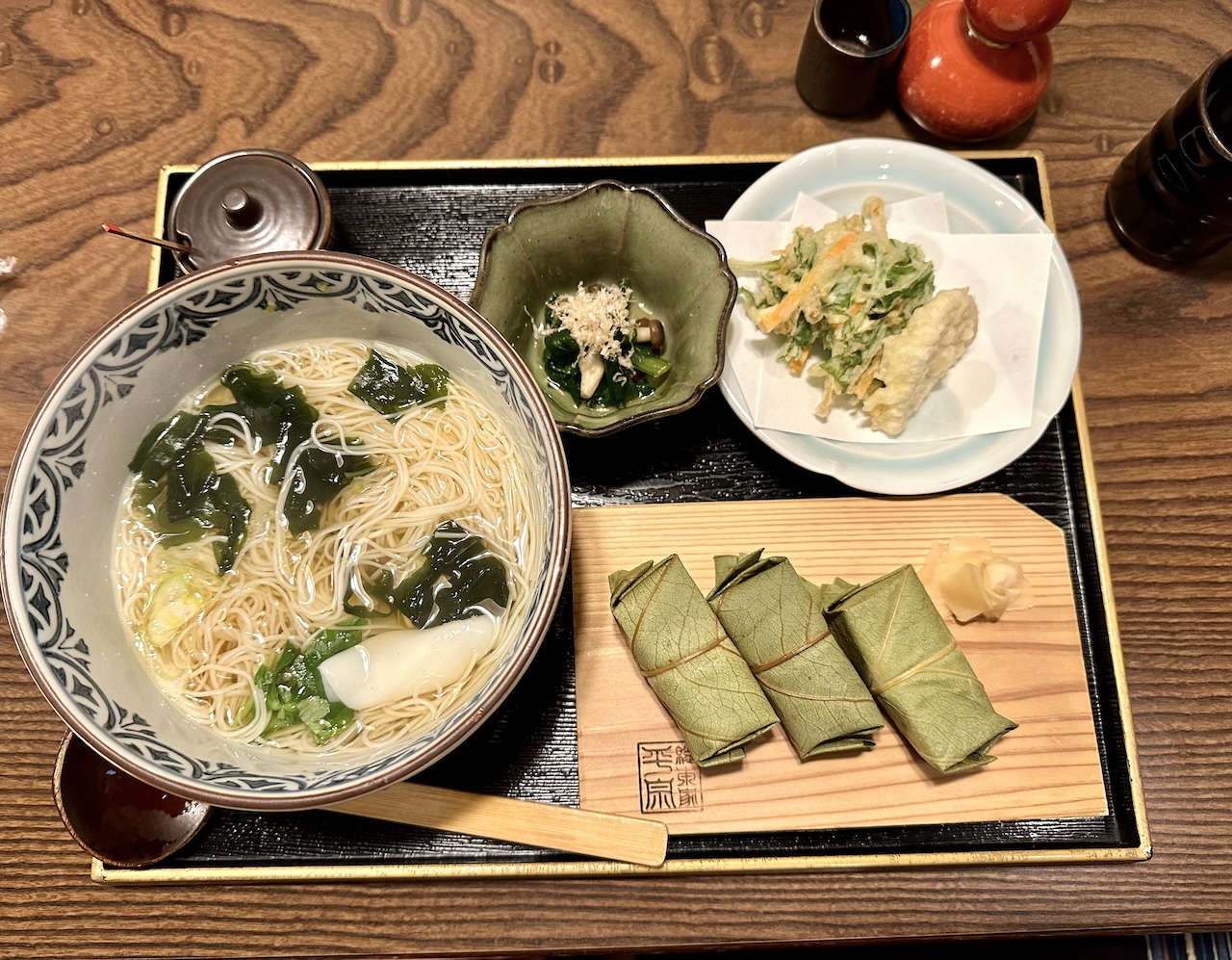
Shopping in Nara
Nara offers a unique shopping experience that blends traditional crafts with modern finds. Here are some areas for shopping in Nara:
Nara Koen Street: This bustling street near Nara Park is lined with shops offering a variety of souvenirs, traditional crafts, and local snacks. It's a perfect spot to pick up gifts and mementos.
Naramachi: The historic district of Naramachi is home to charming shops and boutiques housed in machiya (traditional wooden townhouses). Explore these narrow streets for antiques, local crafts, and unique finds.
Sanjo Dori: Located near Kofuku-ji Temple, Sanjo Dori is a shopping street with a mix of traditional and contemporary shops. It's a great place to find local goods, ceramics, and accessories.
Omizutori Shopping Street: This street, leading to Todai-ji Temple, is lined with shops selling religious items, traditional sweets, and crafts. It's a convenient spot for souvenir shopping.
Nara-Specific Souvenirs
Local Sake: Nara is known for its sake, and several breweries offer their products for sale at various price points. Consider picking up a bottle of local sake as a souvenir.
Deer-Themed Souvenirs: Given the presence of deer in Nara Park, you'll find plenty of deer-themed souvenirs, from cute plush toys to keychains and artwork.
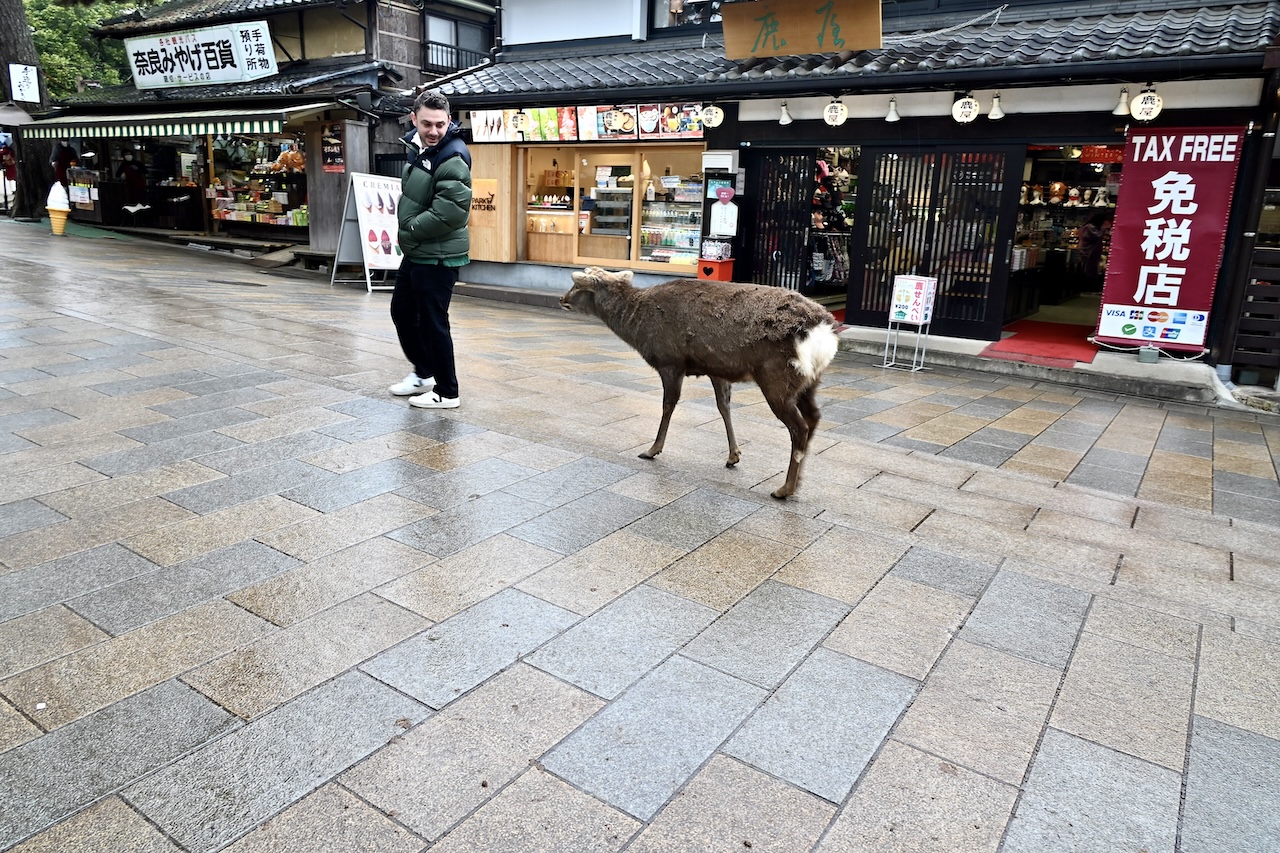
Getting to/from Nara
Both Kyoto and Osaka are conveniently connected to Nara by train, making it a straightforward journey, and a great city to visit for the day.
From Kyoto to Nara (Train):
JR Nara Line: Take the JR Nara Line from Kyoto Station to JR Nara Station. The journey takes approximately 45-70 minutes. Tickets do not need to be purchased in advance and can be bought at the station. Note that JR Nara Station is about a 20-minute walk from Nara Park. To see route options, departure times, and fares, visit the JR West website.
Kintetsu Line: Alternatively, you can take the Kintetsu Kyoto Line from Kyoto Station to Kintetsu Nara Station. This line may be a bit faster (approximately 35-50 minutes) but operates separately from JR. (Meaning, if you have a JR Rail Pass, you won't be able to use it on this train line.) The Kintetsu Nara Station is about a 5-minute walk from Nara Park, making it the more convenient choice for visitors to Nara. Train tickets do not need to be purchased in advance and can be purchased at the station. To see route options, departure times, and fares, visit the Kintetsu website.
If you're lucky, you might even be on the adorable Kintetsu Deer Train from Kyoto to Nara!
From Osaka to Nara (Train):
JR Yamatoji Line: From Osaka Station, take the JR Yamatoji Line to Nara Station. The journey takes approximately 50 minutes. Tickets do not need to be purchased in advance and can be bought at the station. Note that JR Nara Station is about a 20-minute walk from Nara Park. To see route options, departure times, and fares, visit the JR West website.
Kintetsu Line: Alternatively, you can take the Kintetsu Nara Line from Osaka-Namba Station to Kintetsu Nara Station. The journey takes anywhere from 33-41 minutes. The Kintetsu Nara Station is about a 5-minute walk from Nara Park, making it the more convenient choice for visitors to Nara. Train tickets do not need to be purchased in advance and can be purchased at the station. To see route options, departure times, and fares, visit the Kintetsu website.
When planning your trip, it's advisable to check the latest train schedules for the most accurate and up-to-date information. Additionally, Japan Rail Pass holders can use their passes for JR trains, while the Kintetsu Rail Pass is suitable for Kintetsu Line travel.
Getting Around Nara
Nara is a relatively compact city with many of its attractions located within walking distance of each other, especially around Nara Park and the city center.
Walking: The city is pedestrian-friendly, and walking is an excellent way to explore Nara, especially around Nara Park, where many of the main attractions are located. We found walking was the best way for us to get around since many of the sites that we planned on visiting were near one another and not too far from Kintetsu Nara Station.
Bicycles: Renting a bicycle is a popular and efficient way to get around Nara. Several rental shops offer bicycles for exploring the city and its surroundings.
Public Transportation:
Buses: Nara has an extensive bus network that connects various parts of the city. Buses are useful for reaching attractions that are a bit farther from the central area.
Taxi: Taxis are available in Nara and can be convenient for reaching specific destinations quickly, especially if you're traveling with luggage or in a group.
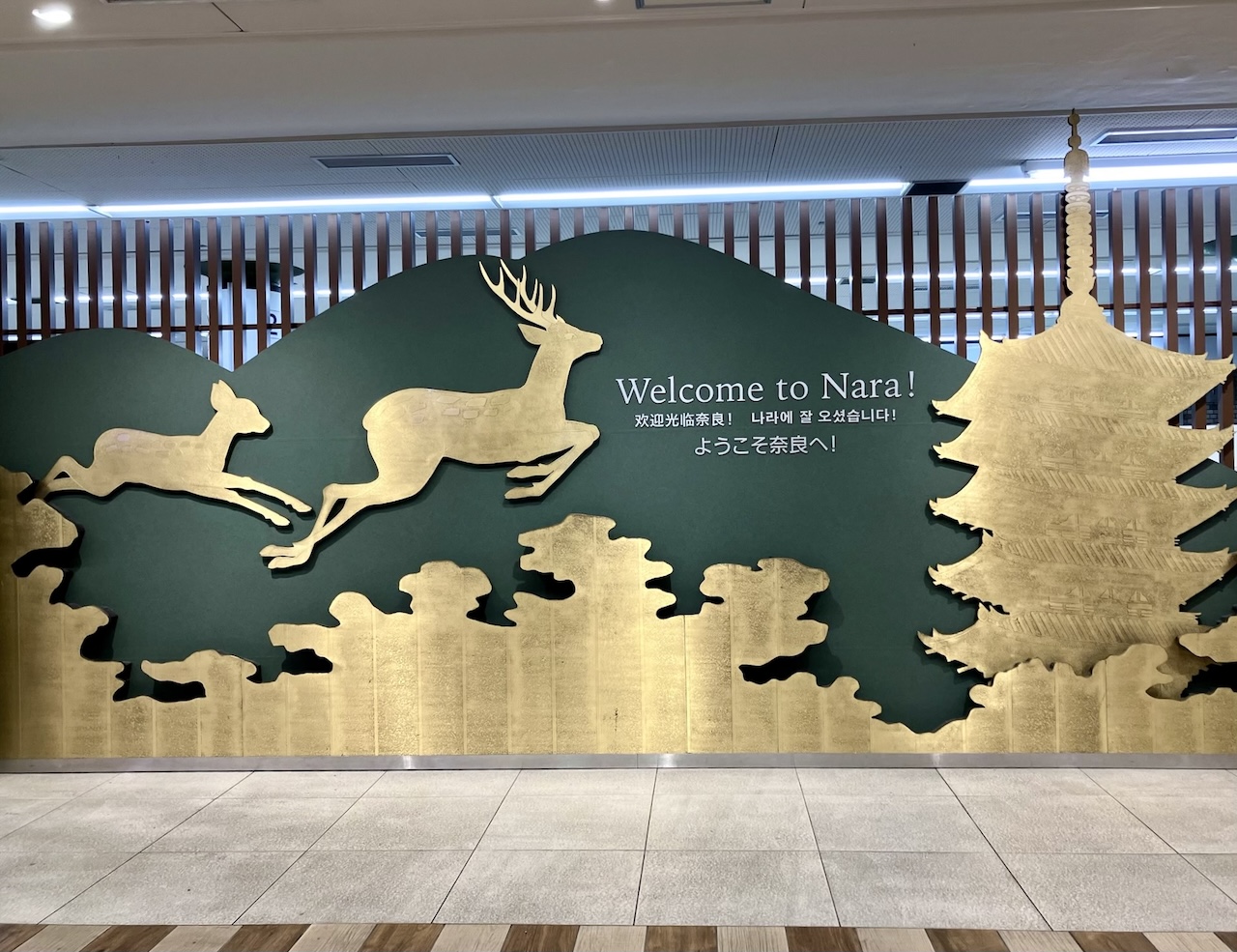







Why we loved Nara
Nara proved to be a serene escape from the bustle of Kyoto, while simultaneously transporting us back into a bygone era of Japan's storied history. From the magnificent giant Buddha statue housed inside Todai-ji Temple, to the sacred deer roaming Nara Park, we thoroughly enjoyed our day in Nara. Although, Brian has a newfound phobia of deer, but that is a story for another day. Just be warned that they can be aggressive (despite being so cute), if you want to feed them.
As sake lovers, visiting a sake brewery while in Nara was at the top of our list and Harushika Brewery did not disappoint! Nakatanidou's pounded mochi was a sweet afternoon treat before boarding our train back to Kyoto.
We ended up getting caught in the rain in Nara, which did ultimately cut our day a bit short, leaving a few sites unseen. However, with that being said, we would absolutely return to Nara the next chance we get! The ease of visiting Nara by train from nearby Kyoto and Osaka, makes it a must-visit day trip for visitors to Japan wanting to learn more about Japan's past.
%20(1).png?width=3690&height=2079&name=Jetset%20Seeker%20Logo%20(Banner)%20(1).png)

